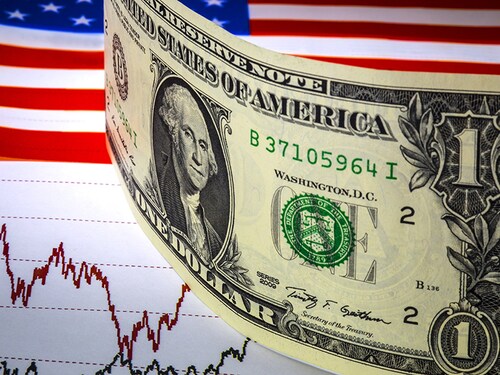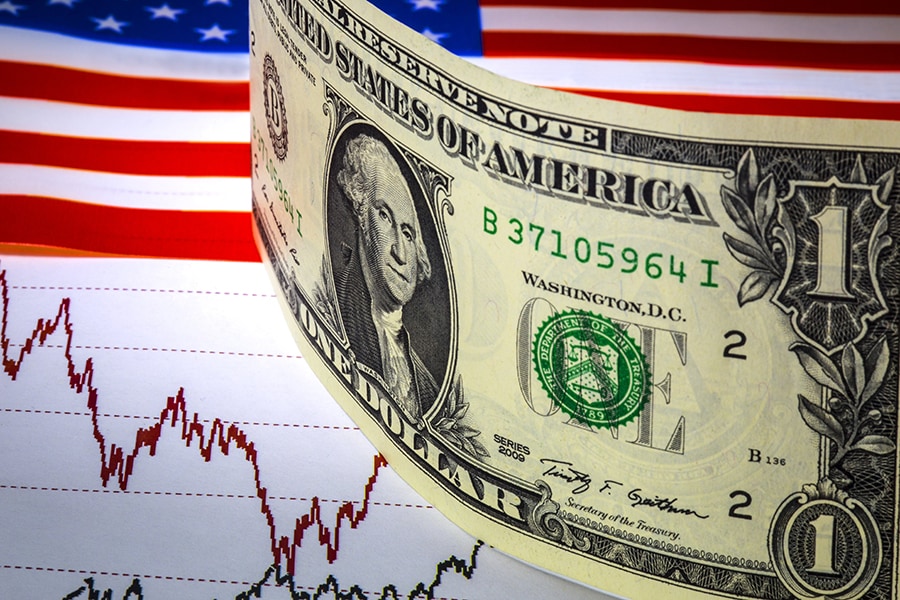Stocks fell on Thursday, giving up some of their gains from the day before, after reports that showed millions more Americans applied for weekly unemployment benefits and consumer spending collapsed.
The S&P 500 closed down nearly 1%, but it was a small retreat in an otherwise strong month for Wall Street. Even with the decline on Thursday factored in, the S&P 500 had its best month since January 1987, a gain that came even as it became increasingly clear that the coronavirus crisis was pushing the United States into a dire economic downturn.
The nearly 13% gain this month means the S&P 500 is now up roughly 30% from its March 23 low. It’s a rally that has surprised even the most ardent bulls.
“Frankly, I’m shocked by the speed of the rally,” said Julian Emanuel, chief equity and derivatives strategist at the brokerage firm BTIG, who has been expecting a rebound since before the rally began.
The rally, even in the face of crushing economic data, highlights investors’ confidence that things will return to normal sooner than they thought when stocks were collapsing in late February and early March.
Both the federal government and the central bank have pumped trillions of dollars into the economy and financial markets, lockdown measures appear to be having some success in reducing rates of infection, and some states are laying out the conditions for reopening.
“Instead of now talking about shutting everything down, we’re talking about opening it back up again,” said Scott Clemons, chief investment strategist for private banking at Brown Brothers Harriman. “That’s a good change in the conversation.”
Some states in the South have begun trying to return to normal, and bigger states such as New York and California have started laying out the conditions for reopening.
That does not mean the economy is suddenly going to be back on track.
Markets tend to rebound long before any actual improvement in economic fundamentals is apparent, as investors buy shares based on expectations for what will happen later in the year, rather than the current climate. During the last recession, the stock market bottomed in March 2009. But the unemployment rate didn’t begin to drop until October of that year.
Top Wall Street economists expect the second-quarter economic data to look, well, cataclysmic. J.P. Morgan economists, for example, believe the American economy will shrink at a previously unthinkable 40% annual rate in the second quarter. The Congressional Budget Office thinks unemployment could hit 16% by the third quarter.
It’s also important to recognize that the current rally has been relatively narrow, with an outsize part of the gains for the S&P 500 index attributable to a handful of giant technology companies — Microsoft, Apple, Amazon, Alphabet and Facebook. In April, these companies grew to account for roughly 20% of the total value of the S&P.
The rebound in shares of technology companies — in part because their businesses are seen as benefiting in various ways from stay-at-home orders — has been most evident in the Nasdaq composite, which has nearly erased all of its losses for 2020.
Apple and Amazon report higher sales.
With most of the nation on lockdown, technology companies like Amazon and Apple benefited as consumers found other ways to spend their money.
Apple said Thursday that its revenue grew by nearly 1% in the first three months of the year as the company was able to make up for sales declines in China, which was locked down for much of the quarter because of the coronavirus.
The company’s income was bolstered by surging sales of its internet services and the Apple Watch and AirPods.
Apple typically forecasts its sales for the next quarter but declined to do so Thursday. Analysts expect the current quarter to be much uglier because of virus-related shutdowns around the world.
Apple showed confidence in its financial footing though by announcing another $50 billion in stock buybacks.
The spread of the coronavirus played right into the hands of Amazon’s core businesses, as consumers shopped more online and companies spent more on cloud computing. Those two pillars of Amazon’s business drove sales to the highest on record outside of the holiday shopping season, the company said Thursday.
Amazon reported that it had $75.5 billion in sales in the latest quarter, up 26% from a year earlier, surpassing analyst expectations. Profit fell about 29%, to $2.5 billion, because it cost more to meet the increased customer demand.
Amazon’s chief executive, Jeff Bezos, signaled that profit may continue to fall in the near future. The company would typically expect to make around $4 billion in operating profit in the next quarter, but “we expect to spend the entirety of that $4 billion, and perhaps a bit more, on COVID-related expenses getting products to customers and keeping employees safe,” he said in a statement.
Consumer spending plunged in March but April could be worse.
Consumer spending collapsed in March as the coronavirus pandemic put millions of Americans out of work and forced tens of millions more to stay home instead of going out and spending.
Spending fell 7.5% from February, by far the biggest drop in the six decades that records have been kept, the Commerce Department said Thursday. The biggest previous decline was 2.1% in 1987. (Adjusted for inflation, spending fell 7.3%, also a record.)
Figures for April could be even worse. Layoffs and business closures did not hit until late March in many places, whereas nearly the whole country has been under some form of lockdown for most of April. Many forecasters think spending could fall at an annualized rate of 40% or more in the second quarter, even if some businesses begin to reopen in May and June.
With consumer activity responsible for more than two-thirds of the country’s economic performance, that would probably lead to the worst drop in economic output since World War II.
Incomes, too, fell in March, though not as sharply as spending. Overall personal income declined by 2%. Wage and salary income fell by 3.1% as layoffs and cuts in hours rippled through the economy. Business owners fared even worse proprietor’s income, derived from partnerships and other mostly small businesses, fell by 8.2%.
Still, the slightly milder decline in incomes could be a silver lining for the economy: Americans are saving more. “At least households have the means to boost consumption a little when the lockdowns ease,” economists at Capital Economics wrote in a note to clients.
American Airlines takes a $2.2 billion loss, and other earnings reports.
American Airlines reported a loss of $2.2 billion in the first quarter of the year, a damaging but expected blow in an industry rocked by the pandemic. The company ended the quarter with $6.8 billion in cash on hand and planned to increase that to $11 billion by the end of June, a recognition that the downturn will be prolonged.
“Never before has our airline, or our industry, faced such a significant challenge,” the company’s chief executive, Doug Parker, said in a statement.
Here are the other big companies that reported earnings Thursday:
— Twitter said it had an unprofitable quarter for the first time in more than two years, even as more users rushed to the platform. The company lost $8.3 million in the first quarter, breaking a profitability streak that started at the end of 2017. Advertising revenue dropped by 27% from March 11 to March 31.
— ConocoPhillips said it was cutting production by 35% after posting a $1.7 billion loss in the first quarter. The company, the largest independent producer of oil and natural gas in the U.S., generated $1.6 billion in cash from its operations in the quarter and was in better financial shape than other oil companies.
— Comcast saw its biggest jump in broadband subscribers and now has nearly 27 million internet customers. But it also saw one of its biggest declines in video, with more than 388,000 people cutting their TV subscriptions. Advertising, which includes its NBCUniversal division, dropped more than 2%, and its theme parks business plummeted 27%.
— Kraft Heinz, which has struggled in recent years as consumers steered clear of its packaged foods, reported Thursday that first-quarter sales surged 3.3% to $6.2 billion as shoppers stocked up on Kraft Macaroni & Cheese, Heinz ketchup and Planters nuts.
— The maker of Lysol, Reckitt Benckiser, reported a surge in sales for the first quarter of 2020. Revenue was up 13% over the period a year earlier. The company also said it saw strong demand for its Mucinex and Norofen cold and pain relief medicines.
— Dunkin’ Brands, one of the world’s largest fast-food restaurant companies, reported that sales plunged 19% at Dunkin’ Donuts and 23% at Baskin-Robbins in the last three weeks of March.
— Royal Dutch Shell, Europe’s largest oil company, said Thursday that it would cut its dividend for the first time since World War II as the company reported a loss of $24 million for the quarter compared with $6 billion in profit in the period a year earlier.
More companies return small-business loans.
A California citrus grower returned its federal stimulus loan Thursday, adding to the more than 25 public and private companies that have given back their funds amid public outcry.
Limoneira Co., an agribusiness that grows lemons, citrus, avocado and other produce, said in a securities filing that it would give back the $3.61 million loan it received from City National Bank. The flood of returns from firms that have received forgivable Paycheck Protection Loans comes after the federal government said it did not believe that large public companies with access to other capital should take the money.

